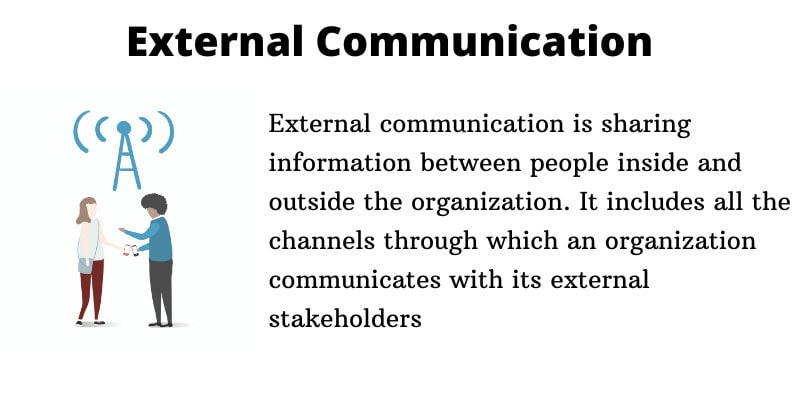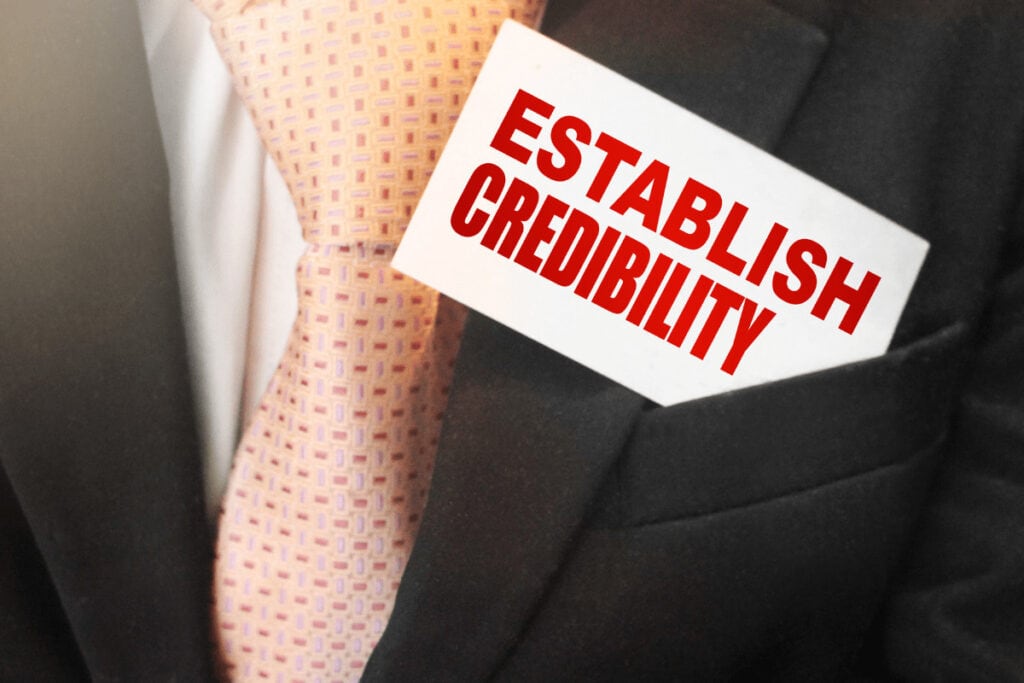
Effective external communication is one of the keys to the success of any project or business. It builds trust, strengthens brand reputation, and ensures alignment with partners, customers, and stakeholders. Whether you’re launching a product, handling a crisis, or negotiating a contract, how you communicate externally can shape outcomes. The ability to communicate with people outside the organization is as important as communicating within the organization.
External communication is a bit more challenging than communication inside the organization because it involves people unfamiliar with the organization’s culture, values, communication styles, and goals. In this blog post, we will discuss everything you need to know about external communication, including its different types and importance. We will also share tips on how you can be good at it.
What is External Communication?
External communication is the exchange of information between an organization and people outside it. This includes customers, suppliers, investors, media representatives, government agencies, and the public. It can be formal or informal, verbal or written, digital or in-person. Regardless of the method, its primary goal is to create a clear understanding of the organization’s value, mission, and message.
Organizations engage in external communication to increase visibility, drive sales, manage public relations, and build lasting relationships with stakeholders. Strategic communication is also used to generate interest, raise awareness, and respond to external challenges like crisis management or brand reputation issues. It’s a critical component of any marketing or PR strategy.

Importance of External Communication
Develops Community Relations
Building strong community ties is crucial for long-term success. When companies take the initiative to connect with local groups, nonprofit organizations, or even online communities, they demonstrate a commitment to mutual growth and responsibility. External communication is the foundation of such relationships and enables dialogue that benefits both parties.

Through consistent and intentional engagement, organizations foster goodwill and open channels for collaboration, sponsorships, and shared campaigns. Whether through community newsletters, public announcements, or social impact partnerships, this type of communication helps establish the brand as trustworthy and connected.
Helps Share and Collect Information
External communication isn’t just about sharing your message—it’s also about listening. Businesses use it to inform the public, partners, or clients about new developments, promotions, and updates. At the same time, it allows companies to gather feedback and data that can improve products, services, or customer experience.
For example, surveys, online reviews, and support inquiries all serve as two-way communication channels. This feedback loop strengthens customer relationships and helps organizations stay competitive in a rapidly changing market.
Builds Company’s Image and Reputation
Your brand’s image is shaped not only by what you do but by how you communicate it. External communication plays a pivotal role in defining how your organization is perceived by the outside world. Whether through advertising, media appearances, or social media, the message you send directly impacts public opinion.
An intentional communication strategy ensures that your organization is seen as professional, credible, and consistent. A well-crafted message can boost consumer confidence and increase loyalty, especially in saturated markets.
Helps Maintain Existing Customers and Reach More Potential Customers
Companies that invest in thoughtful communication can better retain existing clients and expand their reach. Regular outreach through newsletters, personalized updates, or follow-up emails ensures that customers feel valued and informed. This continuous engagement encourages repeat business.
At the same time, external messaging attracts new audiences by showcasing the brand’s benefits and differentiators. Launch announcements, campaigns, and collaborations are tools businesses use to grow their presence in new markets or demographics.
Creates Greater Transparency and Credibility for the Company

Today’s consumers demand transparency from the brands they interact with. Consistent and honest communication helps organizations build trust and demonstrate accountability. When companies are clear about their values, operations, and intentions, it creates a sense of openness.
Being accessible and informative across communication channels fosters long-term credibility. It tells stakeholders that your business has nothing to hide and is willing to take responsibility, especially in challenging times.
Improves Crisis Management Capabilities
In times of crisis, the strength of your external communication can make or break your reputation. Whether it’s a data breach, product recall, or PR issue, having an established communication plan ensures you can respond quickly and professionally.
Transparent communication during crises helps control the narrative, reduce confusion, and reassure stakeholders. It also positions your organization as competent and empathetic, essential for regaining trust and stabilizing operations.
Common Examples of External Communication
News Releases
A news release is a statement issued to the media that announces something new or noteworthy about the company. It might be an event, a product launch, a change in management, or any other major development.
News releases should be well-written and formatted correctly. They should also be concise and to the point, with all the essential information. For example, a news release about a product launch should include the product’s name, features, price, and launch date.
When drafting a news release, the target audience must be kept in mind. The language and tone should be persuasive yet professional. Be sure to proofread and fact-check the release before sending it out.
Social Media Posts
This kind of external communication can take many forms, such as tweets, Facebook posts, LinkedIn updates, and blog posts. Social media posts are a great way to share information with customers and other stakeholders in an informal way. They can also help to build relationships with customers and promote brand awareness. However, it’s important to remember that social media is public-facing, so always use caution when posting sensitive information.

When writing social media posts, use eye-catching visuals and catchy headlines to get more shares and engagement. Keep them short and sweet, so they’re easily read on mobile devices. And always make sure the information is accurate before posting it.
Press Conference
Press conferences should be well-organized and well-prepared. The spokesperson should be familiar with the company’s messaging and be able to answer any questions that reporters may ask.
It’s important to remember that press conferences are a public relations tool, so the spokesperson should act professionally and courteously. Press conferences can be a great way to build relationships with the media and generate positive publicity for the company.
Website Content and Blogging
It includes anything from the company’s About Page to product descriptions and blog posts. Website content should be well-written, accurate, and persuasive. It should also be keyword-rich to ensure that it ranks highly in search engines.
Blogging can be used to announce the news, share product developments, or give insights into the company’s day-to-day operations. When writing a blog post, use a catchy headline and visuals to break up the text. Keep the post concise and to the point, with all the essential information.
Email Newsletter
As their name implies, these websites aim to engage their users with news and updates while gently encouraging people to purchase a product or service.
By subscribing to your email list, people agree to receive emails with updates about your product, business, or non-profit. When somebody provides their email address to join your list, they become subscribers and are now considered a lead or contact.
Tips on How to Be Good at External Communication
Know Your Audience
When communicating with external audiences, it’s essential to remember who your audience is and what they need to know. Remember that different audiences will require different approaches. The goal should be to provide the needed information without overwhelming them.

Be Clear and Concise
It means being aware of your audience and tailoring your message to meet their needs. It also means being brief and to the point, avoiding unnecessary detail or jargon.
Be Responsive
To succeed in external communication, you need to be responsive to the people you’re communicating with. In today’s fast-paced world, people expect quick responses to their inquiries. It includes promptly responding to their emails, phone calls, and text messages—preferably within 24 hours or less.
Use Various Channels
Don’t rely on just one method of communication— mix it up! Use email, social media, phone calls, and face-to-face meetings to keep your stakeholders updated on what’s going on with your project or organization.
Be Consistent
It’s essential to be consistent in the quality and frequency of your communications with stakeholders. Suppose you only communicate when there’s a problem. In that case, people will quickly lose faith in you as a communicator, and they may even start to question your ability to manage projects successfully.

Difference Between Internal and External Communication
Internal Communication
Internal communication is typically focused on exchanging information within an organization. It can be carried out among several people on various communication channels. Using internal communications software, you can receive or send an instant message to a coworker about the staff meeting while getting an email from your boss about the new hires beginning next week. Internal communication is vital for many reasons, one of which is that it reinforces the company’s overarching mission, vision, and values.
External Communication
External communication, on the other hand, refers to the transfer of information between a business and outside the organization. Although people within the company can still see the message, it is intended for an external audience. External communication helps you achieve the goals laid out in your marketing plan. It includes various messages like advertising, press releases, social media posts, and your company’s website. You can develop these messages yourself or use a marketing service provider to do it for you.
Communicating internally is not enough. Organizations should know how to do effective external communication to succeed. Reaching the external audience is essential to promote the company’s products, services, and brand.
Conclusion
Mastering external communication is more than a strategic advantage—it’s a necessity. It helps companies build their brand, strengthen customer relationships, and create a positive public image. Whether it’s through digital channels or direct engagement, how you communicate with the outside world has a lasting impact.
To be successful, organizations must tailor their messaging to different audiences, choose the right communication channels, and maintain consistency. When executed effectively, external communication can transform public perception, drive engagement, and fuel growth in meaningful ways.
Frequently Asked Questions About External Communication
What is external communication in project management?
External communication refers to the exchange of information between a business or project team and people outside the organization, such as clients, vendors, partners, or the public.
Why is external communication important?
It helps build trust, maintain transparency, and ensure alignment with stakeholders, which is essential for project success and brand reputation.
What are some examples of external communication?
Examples include client meetings, press releases, marketing campaigns, emails to vendors, customer support, and public announcements.
How can teams improve their external communication?
Teams can improve by defining clear protocols, using the right communication tools, maintaining consistency in tone, and actively listening to stakeholder feedback.
What tools are best for external communication?
Popular tools include email platforms (like Outlook or Gmail), video conferencing apps (Zoom, Google Meet), CRM systems, and social media management platforms.
Suggested articles:
- 6 Team Agile Communication Techniques & Digital Tools
- What Are The 5 C’s Of Communication In Project Management?
- Communication Channels in Project Management: Formula & Examples
Shane Drumm, holding certifications in PMP®, PMI-ACP®, CSM, and LPM, is the author behind numerous articles featured here. Hailing from County Cork, Ireland, his expertise lies in implementing Agile methodologies with geographically dispersed teams for software development projects. In his leisure, he dedicates time to web development and Ironman triathlon training. Find out more about Shane on shanedrumm.com and please reach out and connect with Shane on LinkedIn.